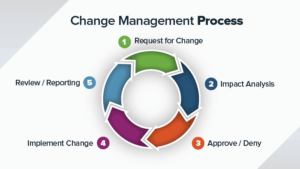Introduction to Business Process Management (BPM)
Business Process Management (BPM) is a systematic approach designed to assist organizations in reducing inefficiencies in their operations while enhancing overall productivity. At its core, BPM focuses on modeling, analyzing, and optimizing various business processes to streamline operations and improve service delivery. By aligning processes with organizational goals, BPM establishes a framework through which businesses can achieve greater operational efficiency and agility.
The fundamental principles of BPM center on understanding the lifecycle of a business process, which includes design, execution, monitoring, and continual improvement. Each phase plays a crucial role in ensuring that processes are not just effective but are also aligned with the strategic objectives of the organization. The use of BPM tools and methodologies enables companies to visualize their workflows, identify bottlenecks, and implement data-driven adjustments, ultimately leading to more responsive and adaptable operations.
Implementing BPM strategies is of paramount importance in today’s competitive business landscape. Organizations face pressures to innovate, enhance customer experiences, and respond swiftly to market changes. BPM provides a framework that not only helps in refining existing processes but also promotes a culture of continuous improvement, fostering agility and resilience. Moreover, as BPM evolves, it increasingly integrates with advanced technologies such as artificial intelligence and machine learning, further amplifying its efficacy.
Historically, BPM has undergone significant evolution, moving from basic process mapping to more sophisticated approaches that incorporate technology and data analytics. This trajectory reflects a growing recognition of the importance of streamlined processes as a driver of organizational success. As we look toward 2024, understanding these foundational elements of BPM will illuminate the upcoming trends that organizations must consider to thrive in an ever-changing business environment.
Key Trends Shaping BPM in 2024
As organizations navigate the complexities of the business landscape, several key trends are emerging in Business Process Management (BPM) that are poised to reshape the field in 2024. One of the most significant trends is the integration of artificial intelligence (AI) and machine learning (ML) into BPM practices. These technologies enable organizations to analyze vast amounts of data, identify patterns, and optimize processes with remarkable efficiency. By automating routine decision-making and enhancing predictive analytics, AI and ML can substantially improve operational performance and responsiveness to market changes.
Another trend that is gaining traction is the rise of no-code and low-code platforms for BPM. These platforms empower users without extensive coding knowledge to design and modify business processes through intuitive interfaces. This democratization of process management allows for increased involvement from various stakeholders, fostering collaboration and rapid innovation. Moreover, the ability to quickly adapt and implement changes can lead to significant agility, allowing organizations to respond more effectively to evolving customer demands and market conditions.
In addition to technological advancements, the focus on sustainability is becoming a critical component of BPM. Organizations are increasingly recognizing the importance of incorporating sustainable practices into their processes. This trend not only aids in compliance with environmental regulations but also enhances corporate social responsibility. By prioritizing sustainability, businesses can significantly reduce waste, lower costs, and improve their brand image, which is crucial in today’s eco-conscious market.
Moreover, advances in automation technologies continue to influence BPM, streamlining workflows and reducing operational costs. Intelligent automation combines RPA (robotic process automation) with AI capabilities, enabling organizations to achieve end-to-end process automation. This shift not only enhances efficiency but also allows employees to focus on higher-value tasks, thus driving innovation and improving job satisfaction.
Impact of Data Analytics on BPM Strategies
Data analytics has emerged as a pivotal factor in shaping effective Business Process Management (BPM) strategies in 2024. Organizations are leveraging comprehensive analytics tools to enhance decision-making capabilities, improve process performance, and facilitate continuous improvement within their operational frameworks. The integration of data analytics into BPM allows companies to shift from intuition-based decisions to data-driven insights, resulting in significant efficiency gains.
One of the core components of analytics in BPM is the use of real-time data insights. By monitoring key performance indicators (KPIs) through advanced analytics platforms, businesses can identify bottlenecks and inefficiencies in their processes promptly. Techniques such as process mining enable organizations to visualize their workflows, allowing for a thorough analysis of the end-to-end processes. This visibility empowers management to make informed decisions based on current performance data, facilitating timely modifications to improve overall efficacy.
Moreover, data analytics enables organizations to drive innovation within their business processes. For instance, predictive analytics can forecast future trends and potential issues, helping organizations to proactively address challenges before they escalate. A case study featuring a major retail company demonstrates this point effectively. By implementing an analytics-driven BPM strategy, the retailer achieved a 30% reduction in operational costs and enhanced customer satisfaction ratings. This was accomplished by refining their supply chain processes through better demand forecasting and inventory management, both made possible by data insights.
In conclusion, the utilization of data analytics is transforming BPM strategies, ensuring organizations remain competitive and agile in their respective industries. By incorporating analytical techniques, businesses can not only optimize their current processes but also innovate and adapt to changing market conditions effectively. The impact of data-driven decision-making continues to be a key driver of success in the realm of business process management.
Future Outlook and Recommendations for Businesses
As we look ahead beyond 2024, the landscape of Business Process Management (BPM) is poised for significant transformation. Companies will increasingly encounter challenges as they strive to adopt new BPM trends while maintaining operational efficiency. The integration of advanced technologies, such as artificial intelligence (AI) and machine learning (ML), may present hurdles related to workforce adaptation and system interoperability. Businesses must proactively address these challenges by investing in employee training and fostering a culture of innovation.
To successfully navigate these upcoming BPM trends, organizations should consider adopting several strategic recommendations. First, it is essential to emphasize the importance of data-driven decision-making. By harnessing analytics, companies can gain insights into their processes, enabling them to identify inefficiencies and areas for improvement. This analytical approach allows for more informed and agile responses to changing market demands, ultimately leading to enhanced performance.
Second, fostering collaboration across departments is vital in the BPM framework. Businesses that emphasize cross-functional teamwork can eliminate silos, ensuring that BPM initiatives are comprehensive and aligned with organizational goals. Implementing collaborative tools and platforms will facilitate communication and transparency, fostering a stronger culture of collaboration that supports BPM objectives.
Additionally, companies should remain adaptable in their BPM strategies. Flexibility will enable organizations to experiment with new tools and methodologies, continually refining their processes in response to technological advancements and market shifts. This approach not only equips businesses to handle disruptions but also promotes innovation, ensuring that BPM practices evolve in tandem with emerging trends.
In conclusion, the future of BPM encompasses both opportunities and challenges. By adopting a proactive and adaptable mindset, coupled with a focus on data-driven strategies and collaboration, businesses can effectively implement BPM trends, ensuring sustainability and growth in an ever-changing business landscape.


















